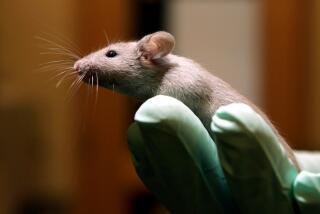Sex of embryos is indistinguishable
- Share via
In a biological sense, sexual “fate” is determined at the moment of fertilization. The sperm carries either a Y chromosome or an X chromosome. The egg contains one X chromosome. Fertilization results in an XY combination for boys and XX for girls. But during the first six or seven weeks after fertilization, XX and XY embryos look exactly alike, says David Page, a geneticist and associate director at the Whitehead Institute for Biomedical Research, affiliated with MIT.
In other words, a 6-week-old embryo has male and female internal structures. One of these, the Mullerian ducts, has the potential to become fallopian tubes and a uterus; the other -- Wolffian ducts -- has the potential to become sperm-making machinery and tubes to carry sperm. Embryos also have primitive gonads that can become either ovaries or testes.
At about seven weeks, a gene called SRY on the Y chromosome tells the primitive gonads to become testes. If SRY is not present, the gonads become ovaries. Once testes form, they begin pumping out the male hormone testosterone along with a chemical called MIS that causes the Mullerian ducts to shrivel up.
Until recently, scientists thought that it was these hormones that acted on the brain to make it masculine. But the UCLA research shows that the brain is on its way to becoming male or female before the fetal gonads secrete hormones.
Many people confuse the terms sex, gender identity and sexual orientation. Sex refers to the physical characteristics, such as a penis or a vagina; it also refers to the chromosomes. Gender identity is how people see themselves, the feeling that “I’m a man” or “I’m a woman.” Sexual orientation is about attraction. Gender identity is separate from sexual orientation.
*
-- Judy Foreman




